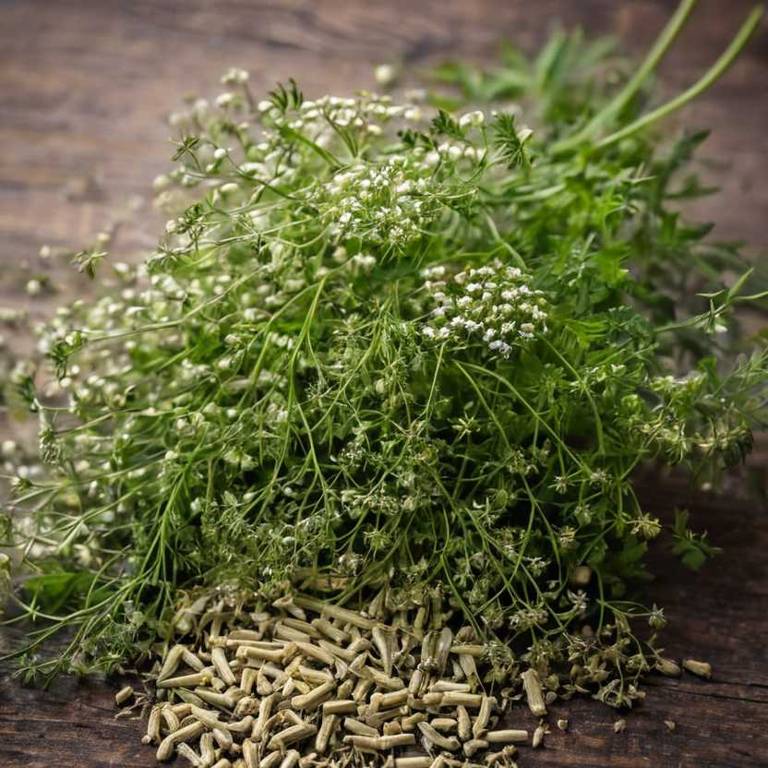By Leen Randell
Updated: Jul 10, 2024
What Are The Medicinal Properties Of Anthriscus Sylvestris (Wild Chervil)?

Anthriscus sylvestris, also known as wild chervil, has health benefits such as anti-inflammatory and antioxidant properties.
The herb is rich in essential oils, flavonoids, and phenolic acids, which are believed to contribute to its medicinal properties. It is often used to make infusions, tinctures, and salves, which can be applied topically to soothe skin irritations. However, wild chervil may cause allergic reactions in some individuals, such as skin redness or itching.
It is essential to consult a healthcare professional before using wild chervil, especially for pregnant or breastfeeding women.
This article explains the health benefits, active constituents, medicinal preparations, possible side effects, and precautions related to Anthriscus sylvestris.
- What are the health benefits of Anthriscus sylvestris?
- What are the active constituents of Anthriscus sylvestris?
- What are the medicinal preparations of Anthriscus sylvestris?
- What are the possible side effect of using Anthriscus sylvestris improperly?
- What precautions to take when using Anthriscus sylvestris medicinally?
What are the health benefits of Anthriscus sylvestris?
Anthriscus sylvestris, also known as wild chervil, has health benefits such as reducing inflammation and improving digestion.
The plant's essential oils have been found to have antimicrobial properties, making it useful for soothing skin irritations and promoting wound healing. Additionally, wild chervil has been traditionally used to treat conditions such as bloating and gas, due to its carminative properties.
Its herbal properties also show promise in reducing symptoms of menopause and menstrual cramps.
Here's a detailed article about the 10 health benefits of Anthriscus sylvestris.
What are the active constituents of Anthriscus sylvestris?
Anthriscus sylvestris, also known as wild chervil, has active constituents such as flavonoids, coumarins, and volatile oils, which contribute to its medicinal properties.
The plant is rich in furocoumarins, including psoralen and bergapten, which have been shown to have antimicrobial and antihistaminic activities.
Additionally, wild chervil contains lignans and phenolic acids, which have been reported to possess anti-inflammatory and antioxidant properties, making it a valuable plant in traditional medicine.
Here's a detailed article about the 10 active constituents of Anthriscus sylvestris.
What are the medicinal preparations of Anthriscus sylvestris?
Anthriscus sylvestris, also known as wild chervil, has medicinal preparations such as infusions and decoctions that are used to treat a range of conditions.
The plant's leaves and stems are traditionally used to reduce inflammation, relieve digestive issues, and soothe nervous system disorders.
Additionally, its oil and essential oils have been studied for their antimicrobial and antiseptic properties, suggesting potential applications in wound healing and skin care.
Here's a detailed article about the 10 medicinal preparations of Anthriscus sylvestris.
What are the possible side effect of using Anthriscus sylvestris improperly?
Improper use of Anthriscus sylvestris, also known as wild chervil, increases the chances of experiencing side effects such as headaches, dizziness, and nausea.
High doses may also cause allergic reactions, including skin rashes and itching.
Additionally, pregnant women and individuals with kidney or liver issues should exercise caution when consuming wild chervil, as it may exacerbate existing conditions or interact with medications.
Here's a detailed article about the 10 most common side effects of Anthriscus sylvestris.
What precautions to take when using Anthriscus sylvestris medicinally?
Before using Anthriscus sylvestris, also known as wild chervil, for medicinal purposes, you must take precautions such as being aware that it can cause allergic reactions and interact with certain medications.
Additionally, pregnant and breastfeeding women should consult a healthcare professional due to its emmenagogic and antispasmodic properties.
Also, be cautious when consuming large quantities as it may cause dizziness and gastrointestinal upset in some individuals.
Here's a detailed article about 10 precautions to take when using Anthriscus sylvestris.